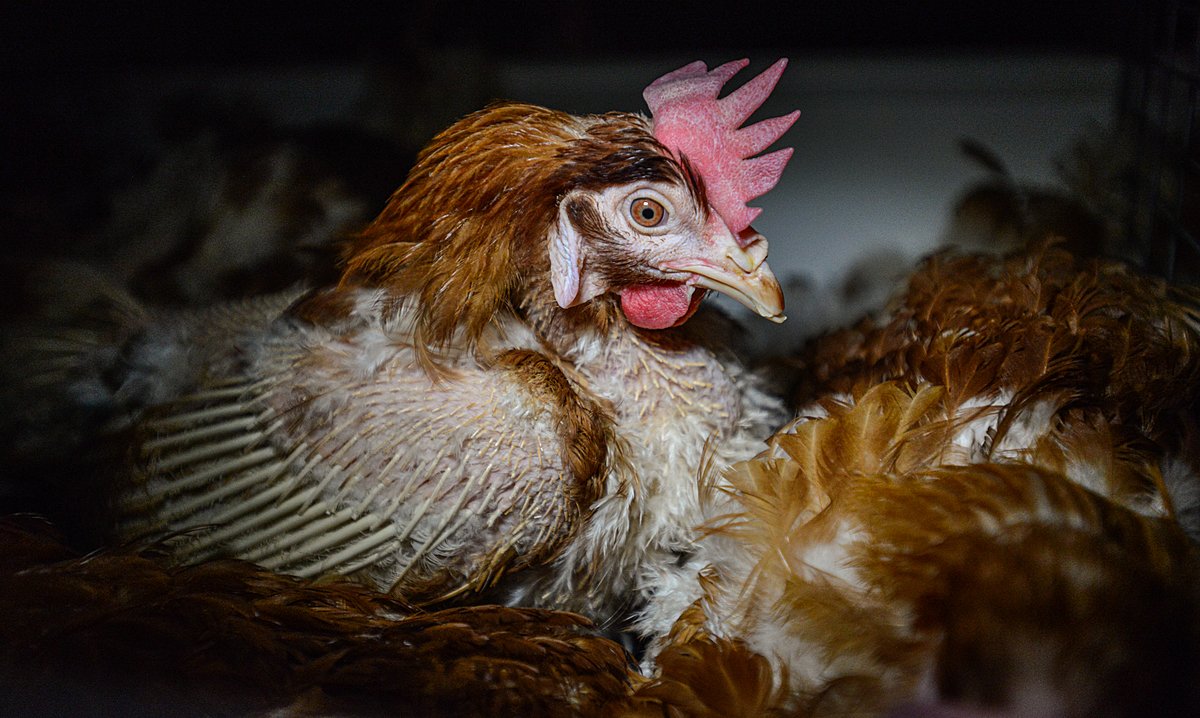Australia is banning battery cages by 2036 – but it needs to happen sooner
Today it was announced that Australia will finally be introducing a national phase-out of battery cages by 2036. Until now, Australia was one of only seven OECD countries that had failed to introduce a national phase-out/ban on the use of battery cages for egg production. Each year, over 5 million layer hens are confined in these outdated and unacceptable cages to produce around 40% of Australia’s egg supply.
Although this is a step in the right direction, the Alliance is calling on state and territory governments to shorten this unacceptably long phase-out period and fast track the transition to more humane cage-free production systems.
What are battery cages and why are they so harmful to hen welfare?
Despite a consumer shift towards free-range eggs, around 40% of eggs purchased in Australian supermarkets are still sourced from hens confined in barren battery cages. This is despite decades of research showing that the welfare needs of hens cannot be met in these outdated and inadequate housing systems. Hens are contained in groups of 3-4 inside small wire cages with no environmental enrichment or room to properly engage in natural behaviours.
Each hen has less space than the size of an A4 piece of paper, an area so limited they are unable to perch, scratch, forage, dust bathe, stretch, flap their wings or move around freely. And without any access to a private enclosed nesting area, they are denied the freedom to engage in crucial nesting behaviour. Essentially, they have no room to behave like hens.
Smart and social hens cramped in battery cages suffer from extreme behavioural deprivation, and experience higher rates of injury and illness, including fatty liver disease, disuse osteoporosis and bone breakage. These and many more welfare issues are inherent to the battery cage system and cannot be managed or improved without changing the housing system itself.
Cage egg producers argue that hens in free-range systems can experience higher mortality rates and greater exposure to diseases and predators. Although it is true that non-cage systems are not perfect, welfare issues in these systems are capable of improvement through interventions and better management. In contrast, welfare issues in barren cages are inherent to the system and incapable of change.
Do Australians want battery cages to be banned?
Independent research commissioned by RSPCA Australia in 2017 revealed that 8 in 10 Australians want to see battery cages phased out. This finding is unsurprising given that a few years ago during the national poultry standards public consultation, a staggering majority of a record 167,000 community submissions strongly opposed the use of battery cages.
This serious public concern is also reflected in the increasing number of Australian consumers purchasing eggs produced using alternative housing systems, such as free range and barn-laid. These higher welfare alternatives now account for about 60% of the volume and 70% of the value of the Australian egg market.
Demonstrating just how significant this issue is for consumers who care about hen welfare, Australia’s consumer watchdog (ACCC) has taken action against various cage egg producers for falsely representing their eggs as ‘free range’. And in response to this public sentiment, a large range of well-known food businesses have pledged to go ‘cage-free’, including Coles, Woolworths, Aldi, Compass Group, Mars, Nestle, McDonalds, Grill’d, Hungry Jack’s and Zambrero.
It is overwhelmingly clear that the majority of Australians want to see an end to battery cages as soon as possible.
8 in 10 Australians want to see battery cages phased out
How has this cruel practice been allowed under the law?
A host of unacceptable practices which cause animal pain and suffering are legalised in Australia due to the operation of national codes of practice. Developed in the 1990s before a range of advances in animal welfare science, the former code governing poultry welfare is a classic case in point. The poultry code permitted and effectively immunised from legal challenge a range of standard yet concerning industry practices, such as the use of barren battery cages.
Although the states and territories could have banned the practice within their own jurisdictions, only two legislated to do so. The ACT completely prohibited the use of battery cages from 2014, and Tasmania introduced a more limited prohibition allowing existing cage operations to continue while banning the creation of any new battery hen operators from 2013.
It was only possible to achieve a nationwide phase-out if all state/territory governments could reach agreement on a timeline, as part of the creation of the new Australian Animal Welfare Standards and Guidelines for Poultry (which will replace the former code).
Under the recently released Standards and Guidelines, a phase-out by 2036 has been agreed, and until this time the use of battery cages will continue to be allowed (with a tapering off period from 2032).
Why was there such an unacceptable delay in creating the new Australian Animal Welfare Standards and Guidelines for Poultry?
There have been two opportunities to legislate an end to the use of battery cages since the former code governing poultry welfare was first developed - first in 1994 and then again in 2001. However, each time the egg industry staunchly opposed the change and, instead, only minor modifications to cage sizes were introduced.
It took a staggering seven years from start to finish for governments to revise Australia’s poultry standards. This prolonged delay not only created significant uncertainty for industry and consumers, but, more seriously, deprived millions of hens from the benefits of improved welfare standards. Over those seven years, another 35 million hens were forced to endure their entire adult lives inside barren battery cages.
The underlying cause for this delay was the egg industry’s ongoing opposition to a cage phase-out and their refusal to negotiate a reasonable transition timeline with government. If they had acknowledged the inevitability of a phase-out sooner, the standards would have been finalised years ago, improving the welfare of millions of hens.
Concerningly, there is no formal legislated process governing how animal welfare standards and guidelines are created and reviewed in Australia. In the absence of legislative direction, it has become common practice for the development of standards to be managed by departments of primary industries and agriculture, with funding from the very livestock industry that will be regulated by the standard.
The Australian egg industry was heavily involved in the poultry standards review, with one governance expert accusing egg industry executives of colluding with the NSW Department of Primary Industries (DPI) to frustrate progress towards a phase-out.
Documents obtained using freedom of information laws provided evidence of undisclosed meetings held between the NSW DPI and egg industry representatives prior to the commencement of the standards-writing process, which appeared to be setting out how to stage-manage the involvement of animal welfare groups.
The documents also revealed that a NSW DPI veterinary officer recommended removing the requirement for birds to have “sufficient space to stand and stretch limbs” on the basis that this would not be possible in a battery cage – suggesting that the government was aligning with the industry’s interest in maintaining cages.
Further, animal welfare scientists wrote a letter of complaint to the chair of the review claiming that their research had been distorted to support the case for maintaining battery cages.
Various state governments were similarly concerned with NSW DPI’s management of the process, leading to Victoria commissioning its own independent peer-reviewed farmed bird welfare science review and WA dissenting from the draft Standards.
The experience with the poultry standards review process is a perfect example of why Australia needs independent agencies in charge of animal welfare standards development, able to make timely decisions in alignment with best available science and the expectations of the community.
When will battery cages be phased out?
The new Standards and Guidelines set a phase-out date of 2036, with a stepped phase-out depending on the date the cages were installed.
So for example, if cages were installed before the end of 2011, producers must cease using them by 1st July 2032. Whereas, if they were installed post 31 December 2014, they must cease use by 1st July 2036.
With a staggered phase-out period from 2032 to 2036, between 39 and 55 million more hens may be forced to suffer confinement in battery cages before battery cages are completely banned.
Phasing out the use of battery cages over the next 14 years unreasonably weights the interests of the commercial egg industry above the public interest in improving animal welfare.
Up to 55 million more hens may suffer before battery cages are completely banned.
Given recent consumer trends away from cage eggs, cage production was projected to decline regardless – so this phase-out simply speeds up an already inevitable transition process.
Egg producers regularly have costs associated with maintaining or replacing housing systems, and the only mandatory requirement under the new Standards is to no longer use barren cages – producers have the choice of investing instead in furnished cages, barn or free-range production. It’s also possible that governments could provide financial assistance by funding adjustment packages.
In light of these factors, and the long lead up to the announcement of a transition, it is hard to make any case that egg producers require an additional 14 years to transition away from barren battery cages when the cost to animal welfare is so high. With every year added to the phase-out period, millions more hens are unnecessarily subjected to life inside a battery cage.
What does this mean for egg consumers?
Cage eggs account for almost 40% of eggs sold (and 28% value) in Australian supermarkets. The majority (64%) of Australian egg consumers currently purchase non-cage (free-range or barn) eggs and economic analysis has shown that they will likely see a price decrease of 4 cents per egg due to increasing economies of scale.
What can Australians do to make sure a phase-out happens as soon as possible?
If you want to see the phase-out date brought forward, we encourage you to write to the premier/chief minister and agriculture minister of your state or territory, as well as your local state member of parliament to let them know. Remember that the more personalised and informed your message, the more seriously it will be taken.
Read our media release on this issue here.
Learn more from our core members
‘Ensure your MP is fully informed on battery cages’ Animals Australia
‘End the Cage Age’ Compassion in World Farming
‘End the Cage Age’ FOUR PAWS Australia
‘It’s time to #CanTheCage’ HSI Australia
‘Battery Hens’ Voiceless, the animal protection institute
‘Ban Battery Cages’ World Animal Protection Australia
Photos sourced from: Jo-Anne McArthur We Animals Media.



